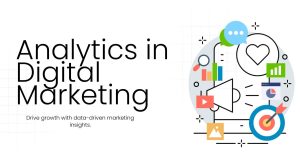What Are Examples of Emotional Motivators?

Understanding human behavior isn’t just about logic. Emotion plays a central role in how people make decisions. Whether it’s choosing what to buy, who to trust, or where to spend time, emotions often lead the way. This is where emotional motivators come in.
These motivators are the emotional forces that drive action. Businesses use them to shape ads, improve customer experience, and build loyalty. But emotional motivators aren’t only relevant to marketing—they show up everywhere people make choices.
Let’s look at what emotional motivators are and examine some examples that illustrate their impact.
Why Emotional Motivators Matter
People like to believe they are rational. In reality, many choices are made based on feelings. These decisions are often justified later with logic. This makes emotional motivators incredibly powerful.
Brands that understand emotional motivators can form deeper connections with customers. This connection leads to trust, engagement, and loyalty. It’s why some companies feel more relatable or comforting, even when their product is similar to others.
Emotional motivators tap into human desires. These aren’t surface-level wants, but deep psychological needs—like the need to feel secure, respected, or in control. To understand why these emotional motivators work, it helps to explore the most attractive emotions in human behavior.
Common Emotional Motivators in Everyday Life
1. The Need to Feel Safe and Secure
People want to be safe — physically, financially and emotionally. It’s products that promise safety, protection, stability and longevity that tend to do well because they play to this primary driver.
Think about insurance ads. They do not really get into policy. They are instead about peace of mind, projecting that families are covered during hard times.
Another example? Home security systems. They position the car as a safety vehicle rather than getting into the technical specs. It’s the emotional reassurance that makes that sale.
2. The Desire to Belong
Humans are social by nature. We want to belong to something greater — a community, a movement, a tribe. This desire is a motive force behind a lot of choices, from clothing and hair style to who to vote for.
Brands such as Apple or Nike do not just sell products; they sell identity. When people wear these logos, it speaks to who they are and what they stand for. Here’s an emotional motivator at play: “If I have this, then I belong.”
Even social media operates under this mandate. And so Likes, shares, follows — they all feed our hunger to connect.
3. The Drive to Succeed
The desire to feel successful, everyone has it. Success can mean various things — becoming more successful at whatever you do, learning new things or being adulated.
This is usually prevalent in industries such as education and self-help. Online classes, motivational books, and yes, even fitness apps often trade on the promise of transformation.
“Unlocking your potential” or “Being the best version of yourself” are emotional hooks that elicit action.
4. The Wish to Feel Unique
Nobody wants to feel like a nobody. It’s appealing to people to be different, special or new and original in some way.”
Luxury brands do this well. They frequently emphasize how exclusive or rare something is. Special editions and personalized products revolve around the emotional driver of ‘you are unique’.
It’s also the reason people will pay a premium for personalized products or boutique services. It makes them feel visible and appreciated.
5. The Urge to Be in Control
Control is comforting. And when life seems especially chaotic, one of the ways people try to wrangle a bit of control is by taking stock in the one thing they can manage right now, whether it’s a bank statement, making a career choice, or planning a vacation.
The emotion is why companies that offer tools, advice or flexibility often win us over. Apps that allow you to track your spending or plan your meals convey a sense of empowerment. Even companies with simplistic options, such as subscription plans, appeal to this motivator.
When people also feel in control, they feel better about the decisions they make.
How Emotional Motivators Appear in Real Scenarios
Shopping
Consider someone shopping for a car. The decision isn’t based only on gas mileage or price. If they have young kids, safety will be a key motivator. If they’re young and single, maybe status or freedom plays a larger role.
Auto brands know this. That’s why they create different campaigns for different audiences—each shaped around the emotional drivers of that group.
Health and Fitness
Gyms and wellness products often push more than just physical benefits. They tap into emotions like confidence, attractiveness, and personal achievement.
A gym ad that says “Get Fit” may not be as powerful as one that says “Feel Strong, Feel Proud.” The latter connects directly with emotional motivators.
Technology
Tech companies often don’t just promote functionality. They promise ease, connection, and peace of mind. A smart home device isn’t only about automation—it’s about feeling secure, in control, and modern.
Apple’s marketing often emphasizes creativity, empowerment, and individuality, more than technical specs. That emotional focus is what builds loyalty.
Why Marketers Rely on Emotional Motivators
Data and logic help inform customers, but emotions drive action. This is why emotional motivators are central to effective marketing strategies.
Instead of asking “What can our product do?”, smart brands ask, “How will our product make people feel?”
By mapping these feelings, businesses can shape experiences, messages, and products that resonate on a deeper level.
This emotional alignment can improve customer satisfaction, increase conversions, and strengthen brand reputation.
Recognizing Emotional Motivators in Yourself
It’s not just about observing others. Recognizing emotional motivators in your own decisions can be enlightening.
Ask yourself:
-
Why do I prefer this brand over others?
-
What feelings does this product or service bring out in me?
-
When have I made a decision that felt right, even if it wasn’t the most logical?
You’ll likely notice that emotion played a larger role than you thought.
This self-awareness can also help you make better choices—and understand the emotional marketing messages targeted at you.
Final Thoughts
Emotional motivators are everywhere. They shape decisions in subtle but powerful ways. Whether it’s the desire to feel secure, unique, or connected, these drivers influence what people buy, trust, and believe in.
Knowing what are examples of emotional motivators can help businesses speak more clearly to their audiences—and help individuals understand why they choose what they choose.
Next time you’re moved by a message, take a moment to ask: “What emotion is this tapping into?”
Chances are, it’s not logic—it’s one of these motivators at work.





